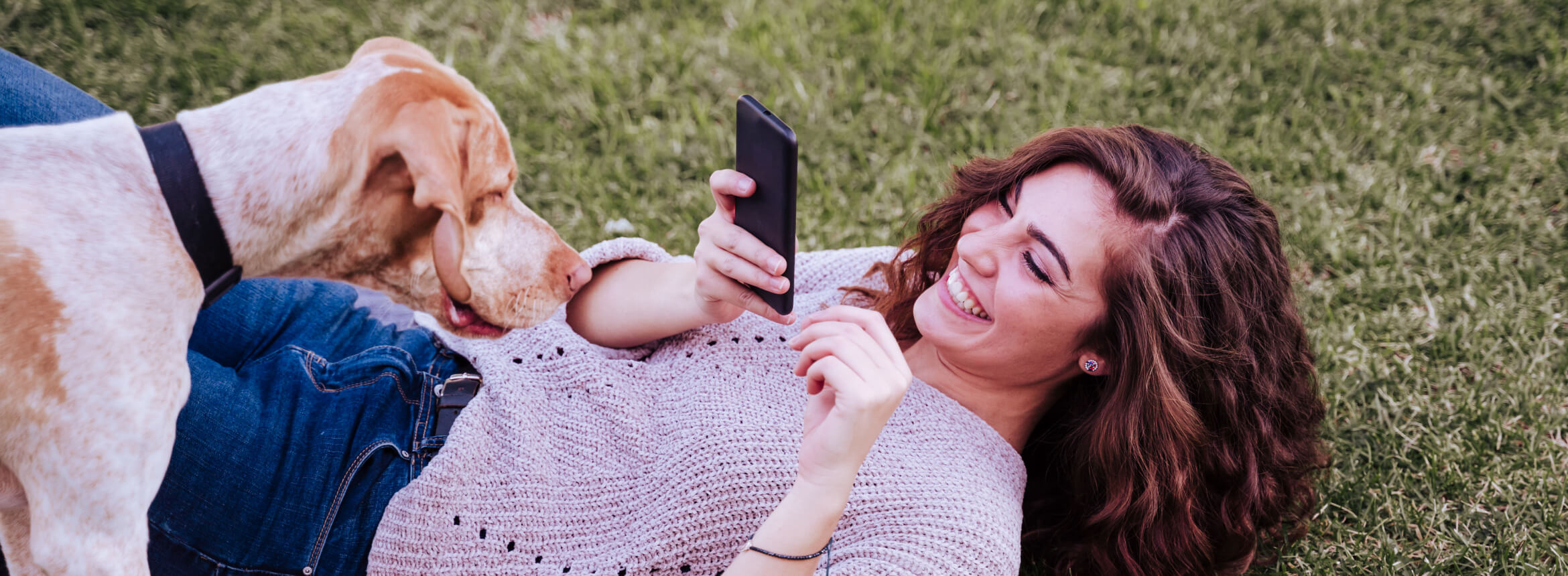1. Use natural light.
Dogs do well outdoors, but any well-lit indoor location will work to bring out your pet’s natural colors. Many indoor cats are sunbeam seekers or window watchers. If your cat doesn’t feel comfortable in a naturally lit area, make it a welcome experience by placing a cat tree near a big window or putting in a bird feeder to provide entertainment.
2. Lower your level.
You might not love the idea of crawling around on the ground, at first. But this is about getting at your pet’s eye level, so take some photos of your pet’s face straight on, from different angles, then get behind your pet to capture their perspective.
3.Look into their eyes.
Your pet’s eyes are a pivotal part of how we read their emotions. Sad puppy dog eyes. Giant, black ready-to-attack cat eyes. Make your pet’s eyes the focal point, even if they aren’t focused on the camera.
4. Focus on your pet’s best life.
Does your dog live to catch that ball? Is every box in your house enjoyed and “managed” by your cat? A wiggly goofball who can’t help but overdo it? No matter what your pet does best or where they do it, when you set out to take photos of your pet being themselves, you’re that much more likely to capture them at their best.
5. Stay ahead of the game.
Position yourself ahead of where your pet will be and use bursts or continuous photos to catch them in action. A pet-in-action scenario may work better, in some cases, with another set of hands (see Tip 10). On your own, try photos of your dog returning to home base after fetching that ball. Or capture your cat’s zoomies in a way you’ve never seen them before.
6. Keep calm and wait around.
You’ll need time and patience for taking pet pics. Cats live by their own rules, and even the best-behaved dogs just won’t behave now and again.
7. Always be clicking.
When you’re taking photos of your pet, take a lot. Try photos from different angles and perspectives. You know what they say about practice.
Looking to take a more formal pet portrait? These last three tips are for you.
8. Keep it clean.
If you want your pet to stand out, make sure nothing else stands in the way. Consider what else will be visible in the background and make sure it doesn’t pull focus away from your pet as the center of attention.
9. Master the art of distraction.
Use everything and anything you have to get your pet to look directly at the camera. Saying their name in different ways. Kissy noises. Squeaky toys. If you’ve overdone it, give it a rest for a few moments, reward your pet, then try a new noise. It’s an art for a reason.
10. Get an assistant.
An extra set of hands is ideal for portraits (and more). Those hands could:
- Dangle treats and toys above your pet
- Keep your pet calm and in portrait position
- Throw the ball for action shots
Above all, have fun!

